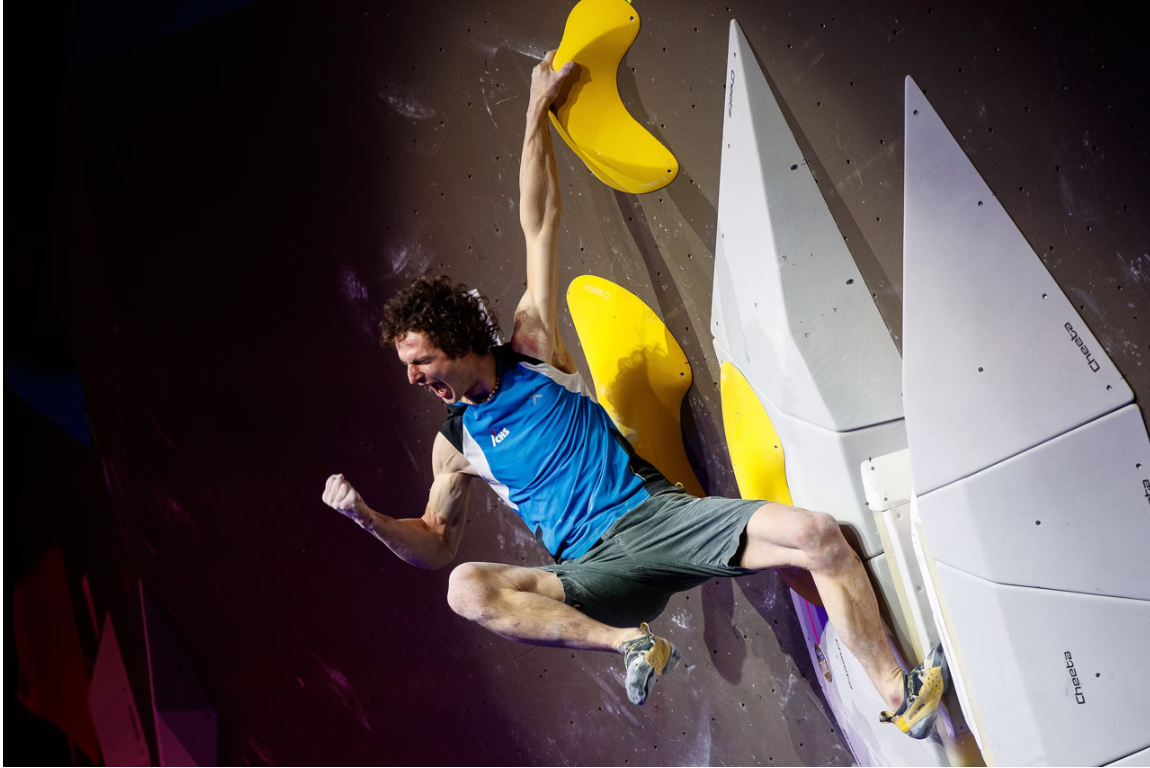Written by Anneka Peterson
In 2020, sport climbing became recognized as an olympic sport. However, due to Covid, no one actually competed in climbing until 2021. When discovering that climbing is an internationally recognized sport for the Olympics there are many questions that tend to come up; mainly, how is it judged? Well, like all the other extreme sports, they are based on completion and skill, but there are 3 main categories that Olympic climbing falls under: Lead, Bouldering and Speed.
Olympic Speed: Speed will be the first event, as it generally necessitates more power and quickness than bouldering and lead climbing. It behooves the competitors to be completely fresh when trying to post good results. The climbers will engage in one-on-one speed “runs” (aka “heats) up a 15-meter-wall on two identical, side-by-side climbs. The route will be the exact same route that has served as the standard speed course in competitions for almost 15 years, a collection of red, amoeba-shaped holds placed in a standardized sequence.
Fun Fact (speed climbing is now known as the quickest Olympic sport, overshadowing the 100 meter dash that takes 9 seconds)
Olympic Lead: Climbers are given six minutes to ascend as high as they can on a 15-meter wall that's tilted five degrees. They can't see the route before they start, and must also clip their belay rope into quickdraw carabiners along the way for safety. Climbers are awarded points for reaching the highest holds on the wall, with the top hold earning 100 points.
(most lead climbs are estimated to be at the 5.10b range or higher).

Photo By: Kazushige Nakajima / IFSC.
Olympic Bouldering: The bouldering portion is next. In bouldering, a climber attempts to scale shorter sequences (commonly called “boulders” or “problems”) without a rope. The climber will be allowed to attempt a given boulder as many times as they wish within a 4-minute time limit. However, when those 4 minutes are up, the climber must move on to the next boulder. The athlete will be judged on how many zones they can go past (about half way up the problem), as well as how many tops they get (putting both hands on the last hold of the problem).

Photo By Marco Kost
Sender One’s LAX location actually has an Olympic standard speed wall, if you have never seen it before, it's definitely worth checking out 🙂
Speaking of the Olympics, Sender One is having a gym-wide challenge in honor of the upcoming events. We will be hosting the Send-Lympics across all of our 5 locations; do you have what it takes?
Here is how it works:
Our Challenge will be running from July 29th - August 26th
Each gym will have specific challenge climbs, and they will be noted by one of these postcards next to the tag!
An attempt or send will count toward the challenge! Once attempted (or sent) the climber will bring their postcard up to the front desk where our staff will stamp in the corresponding circle to their gym location!
- "With what stamp?" I can hear you thinking. Not to worry! These will be dropped off at the same time as the postcards!
As noted on the postcard, there are, of course, prizes associated with this challenge:
- If you complete 4/5 trials, you get 5 raffle entries and a 15% off discount on your next retail purchase!
- If you complete 5/5 trials, you get 10 raffle entries and a 25% off discount on your next retail purchase!
The Raffle:
- Once someone submits their postcard, they will be entered into the raffle!
- The raffle is for either a Sterling Ion 60m or Evolv Drop Pad! The winner of the raffle chooses their prize!
- An additional way to earn raffle entries is to post an attempt (or send) on Instagram, and to tag @senderone on the post/story! 5 entries for each post (limited to one post per challenge)
Because the olympic climbing athletes must compete in all of the events, they must be incredibly, and evenly, skilled. As someone who is mainly a lead climber, personally, this sounds insane! But hey, so are climbers.
Climbing has gone so far to even be recognized in the Paralympics. Paralympic climbing athletes come from all different backgrounds and disabilities. From vision impairment to physical and neurological disabilities, Paralympic athletes compete with the same vigor and talent as the standard Olympic athlete. Most have a unique set of circumstances and restrictions that they must follow based on their ability, this creates an even playing field between all the competitors of similar circumstances. Athletes are put into Sport Class based on their disability, to allow those with a disability of a similar nature to compete within the same category. This also means that events are specialized to create the most suitable, and safe environment for competitors. Having worked closely with some of these athletes, such as Jake Sanches (pictured on the left), I am continually inspired every day by these individuals. Climbing truly has no limits!
We are so excited to see that another extreme sport has entered Olympic recognition. Who is excited to watch it this year?


